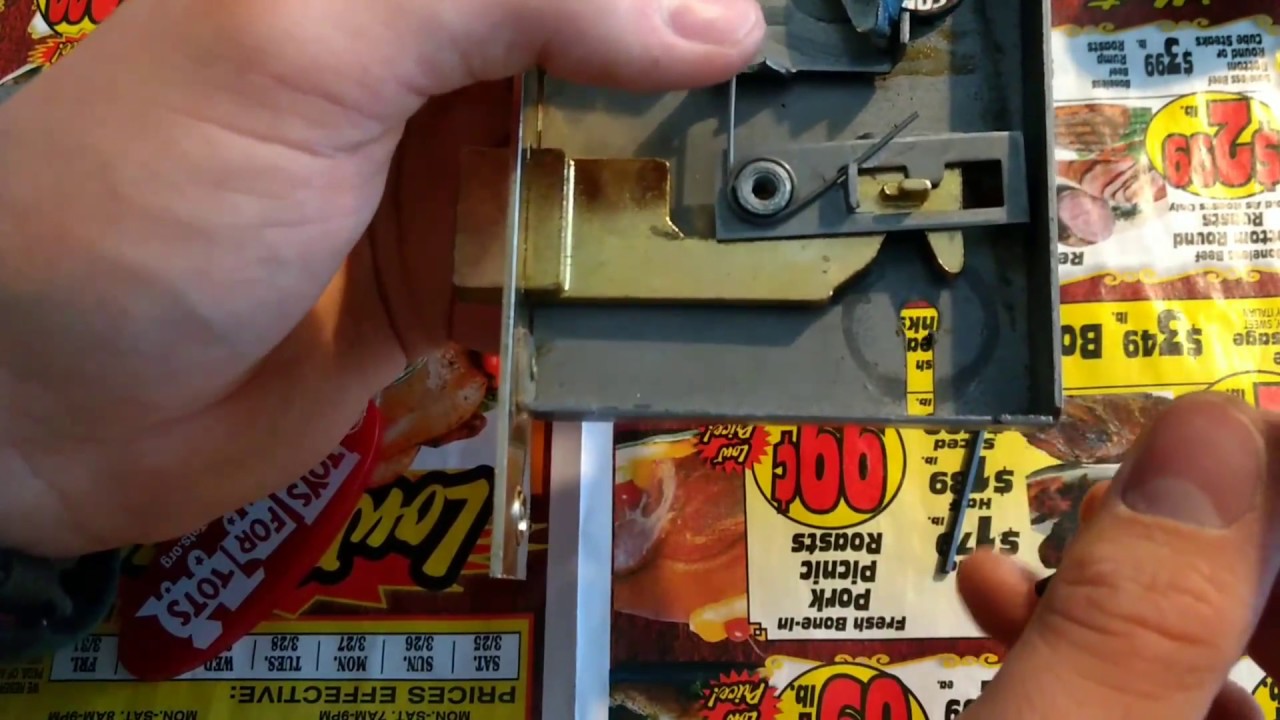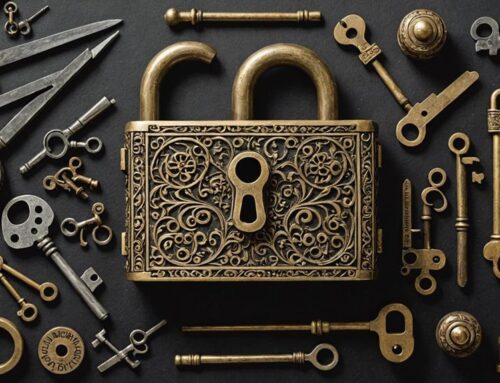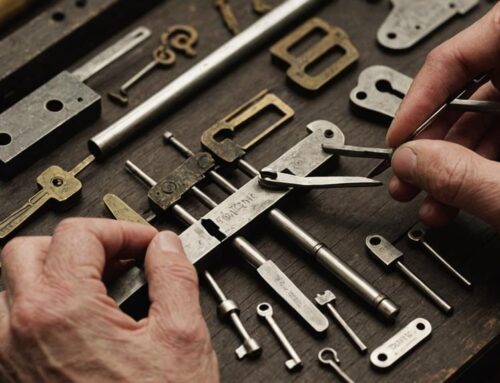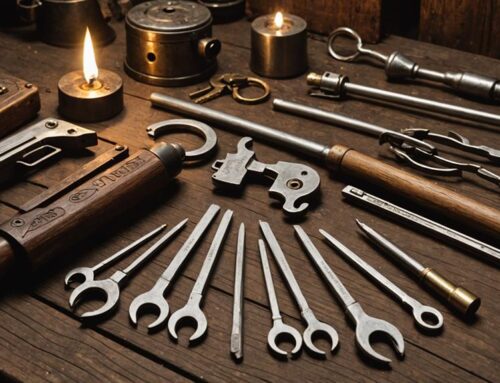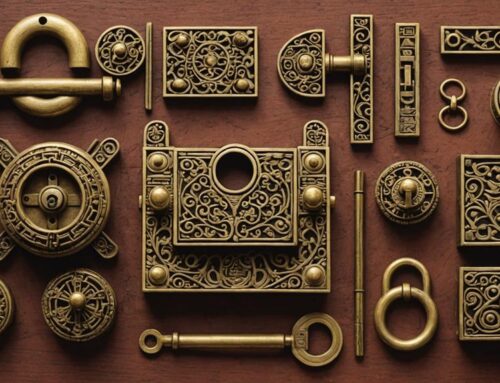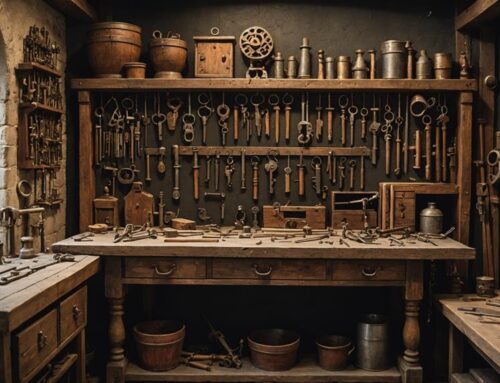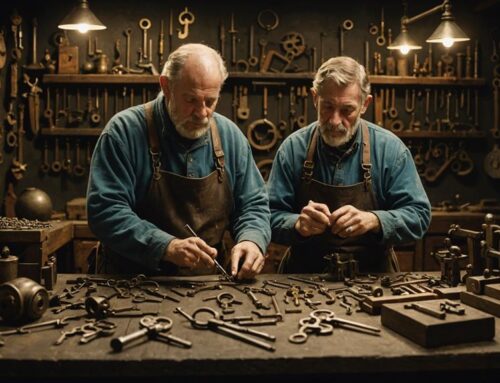You’ve found a fascinating antique with a skeleton key lock, but no key. Don’t fret! With a little patience and our guide, you’re about to unlock its secrets. We’ll teach you the steps of picking the lock, from locating the lever to unlocking the deadbolt. Even if you stumble upon a tricky spring, we’ve got you covered. Grab your tools, steady your hands, and let’s delve into this old-world skill together. Welcome to an exciting journey into the past.
Key Takeaways
- Picking a skeleton key lock can be done with two allen wrenches and some patience.
- The process involves lifting the lever and unlocking the deadbolt.
- If the interior spring is broken, it may require the assistance of a locksmith.
- It’s important to feel for resistance when lifting the lever and unlocking the deadbolt.
Understanding the Mechanism of an Old Skeleton Key Lock
While you’re trying to grasp the mechanism of an old skeleton key lock, it’s vital to remember that it consists of a lever and a deadbolt, and you’ll need patience to manipulate these components successfully. Knowing the history of skeleton key locks can enhance your understanding. These locks, prevalent in the past, were ingeniously simple yet effective. They’ve evolved into different types of antique locks, each with their unique quirks. As you delve deeper, you’ll find that your connection to these timeless pieces grows stronger. You’re not just unlocking a door; you’re becoming part of a centuries-old tradition. You may struggle initially, but remember, practice makes perfect. As you master this skill, you’ll find a sense of accomplishment and belonging that few other activities can provide.
Essential Tools for Picking a Skeleton Key Lock
You’ll need a couple of allen wrenches to pick a skeleton key lock, and remember, patience is just as essential in this process. When working on your picking techniques, you’ll find that precision is just as important as the tools you’re using.
- Insert the First Wrench: Feel for the lever inside the lock, apply a gentle upwards pressure.
- Insert the Second Wrench: Keep the lever lifted and insert your second wrench to turn the deadbolt.
- Unlock the Deadbolt: Slowly turn the second wrench clockwise until you feel the deadbolt move.
If you’re struggling to find allen wrenches, don’t fret! Alternative tools like a sturdy wire can also do the trick. Keep practicing, soon you’ll be part of a community of skilled lock pickers.
Step-by-Step Guide to Lifting the Lever
In this step-by-step guide, you’ll first need to insert an allen wrench into the lock hole, and then wiggle it around to locate the lever inside. It’s an art, really, a process that requires patience and a delicate touch. Some common mistakes include applying too much force or using the wrong size allen wrench. But don’t worry, you’re part of a community dedicated to mastering this craft.
If you feel no resistance when you lift the lever, don’t panic. This could be a sign of a broken spring, a scenario that necessitates locksmith intervention. But before you call for help, try some troubleshooting techniques. Try another allen wrench size or lubricate the lock. Remember, you’re not alone in this journey, and every failure is a step towards mastery.
Techniques for Unlocking the Deadbolt
Once you’ve successfully lifted the lever, it’s time for you to focus on unlocking the deadbolt. This is a crucial step in conquering the art of lock picking. Now, picking the right size allen wrench is vital. Just as you did with the lever, you need to ensure you’ve got the right tool for the job. Here are some points to remember:
- Don’t force the allen wrench in. If it’s not fitting, it’s probably too big.
- Feel for resistance as you twist the wrench. This indicates you’re engaging the deadbolt.
- Patience is key. Rushing this process is one of the most common mistakes in lock picking.
Helpful Tips and Tricks for Successful Lock Picking
Your friend’s advice might be useful, but don’t forget to rely on your instincts and feel the lock’s rhythm when picking it. Common mistakes include rushing the process and not applying adequate pressure. It’s not a race, it’s a skill you’re mastering. Remember, too much force can damage the lock’s delicate mechanism. Instead, gently maneuver the lever with your allen wrenches, feel for that subtle resistance. If it’s not working, don’t despair, consider alternative methods. You might try a sturdy wire, or even lubricating the lock with WD-40 to smooth the process. In this community of antique enthusiasts, we share, learn, and grow together. You’re not just picking a lock, you’re unlocking a piece of history.
When to Seek Professional Help: Recognizing Difficulties and Damages
You’ll likely need to call a professional locksmith if you’re consistently facing difficulties or if you notice any damage to the lock during your attempts to pick it. Recognizing limitations is crucial as forcing the lock can lead to irreversible damage. Look out for signs of damage such as:
- The lock doesn’t open despite several attempts.
- There’s visible wear or the lock parts are broken.
- You feel no resistance or hear unusual sounds from within the lock.
In such cases, it’s better to reach out to experts who have the right tools and knowledge. Remember, your objective is to unlock the antiques, not to damage them further. You belong in a community of antique enthusiasts who value preservation above all.
Frequently Asked Questions
Can You Pick a Skeleton Key Lock Without Any Prior Experience or Training?
Yes, you can pick a skeleton key lock without prior experience. You’ll need patience, two allen wrenches, and an understanding of lock materials and key variations. It’s a skill you’ll master with practice.
What Are the Legal Considerations Around Picking Skeleton Key Locks?
In the treasure hunt of life, tread carefully. Legal ramifications occur if you pick locks without ownership verification. It’s illegal without consent, so ensure you’ve got the right to unlock that vintage charm.
Are There Any Special Techniques to Pick a Skeleton Key Lock Faster?
Sure, to pick a skeleton key lock faster, you’ll need to understand lock materials and key varieties. Practicing patiently can also speed up the process. Always remember, each lock is unique, just like you!
How Can One Differentiate Between a Broken Lock and a Lock That’s Just Difficult to Pick?
Don’t be discouraged! Lock maintenance and understanding key variations can help. If there’s no resistance while lifting the lever, it’s likely a broken spring. But if it’s just tough to pick, keep trying patiently.
How Does the Mechanism of a Skeleton Key Lock Differ From a Modern Lock?
In lock evolution, skeleton keys differ from modern locks as they’re simpler, using a single lever and deadbolt mechanism. You’re engaging with history, unlocking antiques where key designs were less complex than now.

